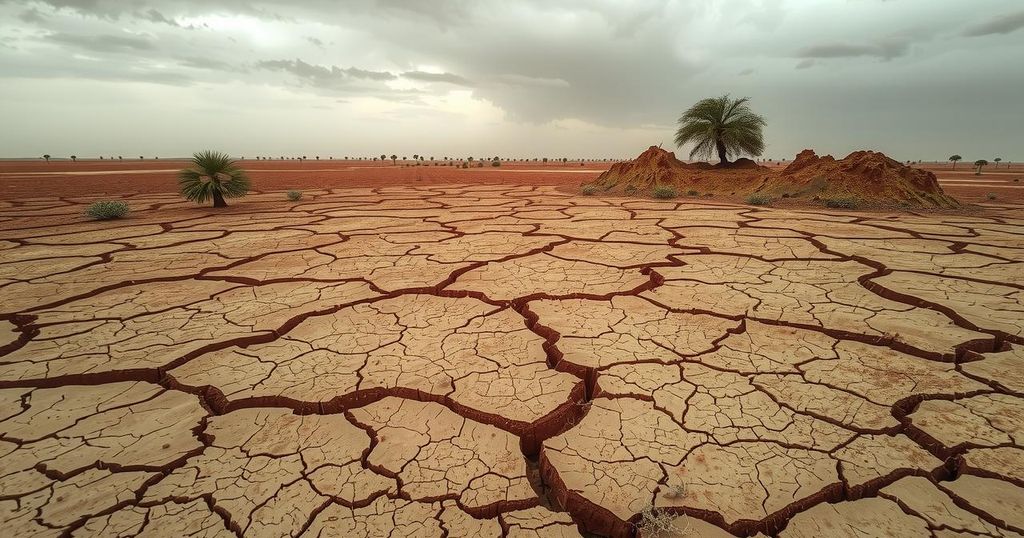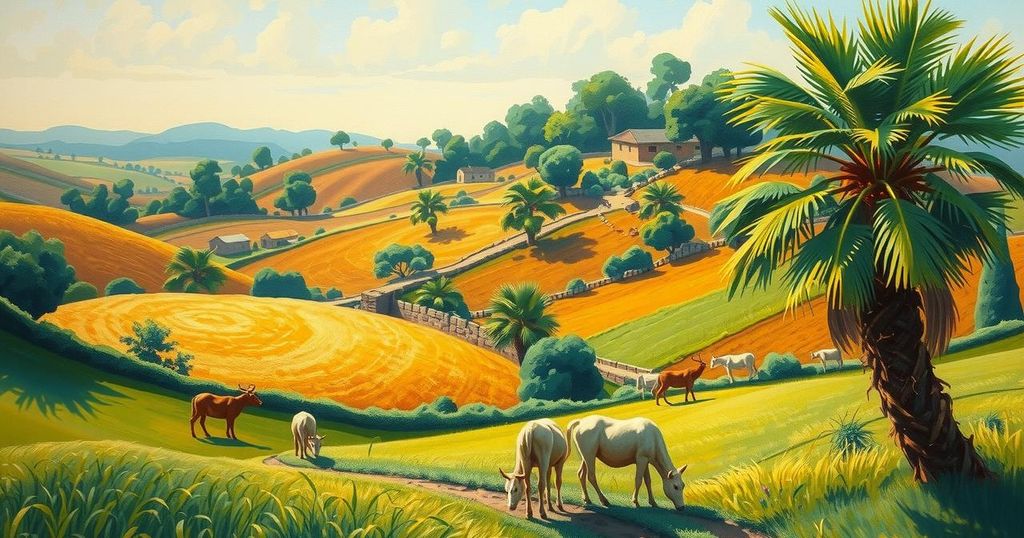Somalia’s Food Security Situation and Projections for 2025
Somalia’s food security is critically impacted by reduced cereal production for 2024, limited pasture and water resources for livestock, and mixed cereal price trends as of January 2025. An estimated 3.4 million people face severe hunger, projected to rise to 4.6 million by mid-2025 due to unfavorable weather and decreased aid.
The GIEWS Country Brief for Somalia dated April 2, 2025, reveals a critical food security snapshot following forecasted reduced cereal production in 2024 attributed to unfavorable weather. The findings indicate significant shortages in pasture and water resources affecting pastoral livelihoods, resulting in a decline in the livestock sector. Furthermore, the varying market conditions for cereals reflect weak integration and localized harvest performances, while an overall deterioration in food security is anticipated in mid-2025 due to adverse climatic conditions and diminished humanitarian support.
The completion of the 2024 secondary deyr harvest in February 2025, which normally represents about 40 percent of the annual cereal output, had disappointing outcomes. The October-December 2024 deyr rainy season delivered inadequate precipitation and disrupted planting, negatively impacting crop germination. Consequently, even though November’s rainfall slightly improved vegetation, the early cessation of rains in December compounded the situation with insecurity and pest issues, leading to lower cereal production. The overall cereal output for 2024 is estimated at 127,000 tonnes, representing an 18 percent drop from the previous five-year low.
In pastoral regions, the October-December 2024 deyr rains also fell significantly short, causing pasture and water shortages. This affects the livestock sector by compromising animal health, reproductive success, and milk production, which will persist until the next gu rains in 2025 potentially remedy the situation. Presently, land preparation for the upcoming gu planting season is underway, though forecasts of below-average precipitation raise concerns about crop yields.
Cereal prices displayed inconsistent trends in January 2025, with local maize and sorghum experiencing varied price changes due to inconsistent harvest performances and market disruptions from insecurity. In Lower Shabelle, maize prices fell by 10 percent, while in the Bay region’s Dinsoor Market, sorghum declined by 5 percent. However, prices surged in Baidoa by 25 percent. Despite stable goat prices in Burao, cereal prices for sorghum rose 40 percent from the previous year, negatively affecting the livestock-to-cereal terms of trade for pastoralists.
The Integrated Food Security Phase Classification (IPC) report from January 2025 estimated that 3.4 million individuals, constituting 17 percent of the assessed population, faced severe acute food insecurity. By March 2025, projections indicated this number would escalate to 4.6 million, or 24 percent, from April to June 2025 due to the forecasted below-average seasonal rains, reduced humanitarian aid, and increasing displacement from drought and conflict. Understanding these dynamics is vital for addressing Somalia’s dire food security challenges.
In summary, Somalia’s food security situation remains precarious, marked by reduced cereal production, livestock challenges, and fluctuating cereal prices. The anticipated deterioration in food security conditions in mid-2025 highlights the urgency for humanitarian assistance, particularly in the wake of forecasted adverse weather patterns and increased displacement due to socio-economic factors. Continued monitoring and interventions are essential to mitigate the severe impacts on the affected populations.
Original Source: reliefweb.int




Post Comment